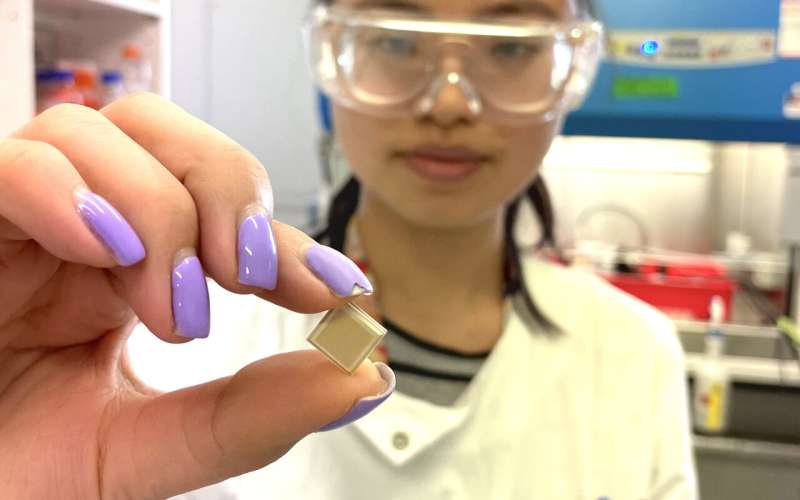Jab-free dengue immunity could be just a click away

A dengue virus vaccine candidate has passed an important milestone, with promising results in animal model testing providing hope to the 390 million people infected every year.
The University of Queensland-developed vaccine candidate, applied to the skin via the high-density microarray patch (HD-MAP), has produced a protective immune response in dengue-infected mice.
UQ Ph.D. candidate Jovin Choo said the result could lead to a readily administered vaccine that could help halt the devastation of dengue fever globally.
“Dengue is the most significant mosquito-borne viral disease in the world’s tropical zone, infecting 390 million and killing 25,000 annually, resulting in annual estimated economic cost of $8.9 billion,” Ms Choo said.
“While a dengue vaccine technically already exists, it’s only licensed to be used in certain countries where Dengue virus is endemic—and with restricted use.
“So to properly fight this terrible disease, we’ve engineered a vaccine candidate based on a platform technology that uses an Australian insect virus called Binjari virus.”
UQ researchers merged the Binjari and dengue viruses making what’s known as a chimeric virus—an artificial virus—to build the basis of the vaccine which has resulted in some great benefits.
“For instance, the particles exactly mimic the surface of their dengue counterpart, which induces a strong, authentic and protective immune response,” Ms Choo said.
“Also, it allows us to very easily manufacture high yields of the vaccine candidate in mosquito cell culture.
“And it only grows in insect cells, and not mammalian cells, making it extremely safe.”
UQ’s Dr. David Muller, one of the senior authors of the research, said another advantage was that the candidate could offer potent antibody responses when delivered via the UQ-developed, Vaxxas Pty Ltd commercialised, HD-MAP system.
“Using the microarray patch, we’re able to employ needle-free delivery of the vaccine to the immune cell-rich layers of the skin with just a click,” he said.
“This targeted delivery allows us to achieve potent neutralizing antibody responses using a fraction of a typical dose delivered by injection.
“The ease of administration, coupled with lower dose amounts means that the patch could provide both an efficient and inexpensive vaccination option.”
UQ’s Dr. Jody Hobson-Peters said this was only the start with the research team looking to apply these techniques more widely.
“There are four variations of dengue that are closely related, all of which can cause severe disease,” Dr. Peters said.
“So we’re now expanding our ongoing pre-clinical studies to all four of these forms of dengue virus.
“And we’re also looking to adapt this technology to other viruses, like Zika virus, West Nile virus and Japanese encephalitis virus.
Source: Read Full Article
